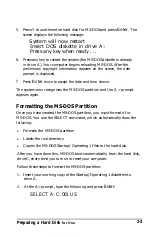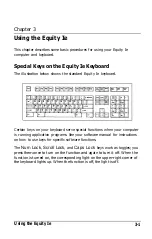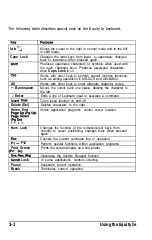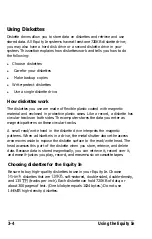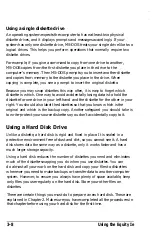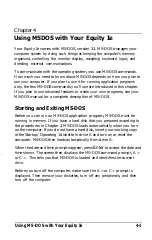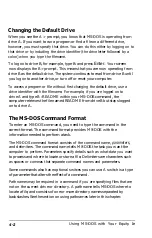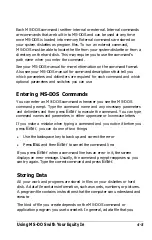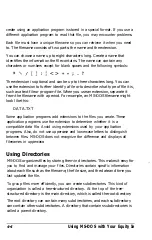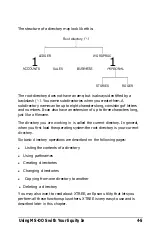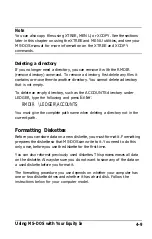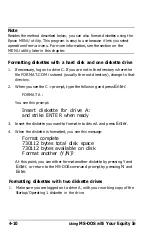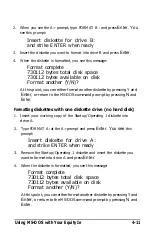
Resetting the Computer
You can reset the computer to reload the operating system or to restart a
program. You may need to reset the computer if an error occurs and the
computer does not respond to anything you type. However, resetting erases
all data in the computer’s temporary memory (RAM) that you have not
stored, so reset your computer only when necessary.
In MS-DOS, you can hold down Ctrl and press C to stop a program’s
operation and return to the MS-DOS command prompt. If an error occurs,
try this method before you reset the computer.
WARNING
Do not reset the computer to exit a program unless you have to. Some
application programs classify and store new data whenever you exit the
program properly. If you reset the computer while such a program is running,
you may lose data.
There are three ways to reset the computer. Because each is more powerful
than the last, try them in the order listed here:
If you are using MS-DOS, hold down
Ctrl
and
Alt
while you press
the
Del
key. The screen goes blank for a moment and then MS-DOS
reloads. (MS-DOS must either be on the diskette in drive A or on the
hard disk.) If this does not correct the problem, try the next method
described below.
Press the
RESET
button on the front panel. This method works even
when the keyboard does not respond to your commands. If this does
not correct the problem, try the method described below.
Remove any diskettes from the diskette drives and turn off all
peripherals. Then turn off the computer by pressing the
POWER
button
on the front of the main unit. Wait five seconds and then switch the
power back on.
3-10
Using the Equity Ie
Summary of Contents for Equity Ie
Page 1: ...EQLJITYIe User s Guide EPSON ...
Page 2: ...EPSON EGlLJITYIe User s Guide Q50188015 1 ...
Page 5: ...iv ...
Page 47: ...3 12 Using the Equity Ie ...
Page 73: ...4 26 Using MS DOS with Your Equity Ie ...
Page 147: ...EQLJITYIe m la r ...


